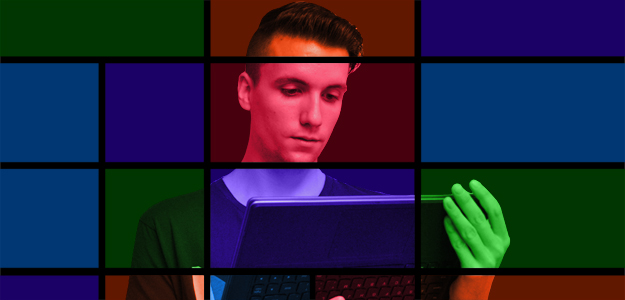 Everybody likes a comeback story and everybody loves to root for the underdog. For me, that was part of the Windows 8 appeal. I was so used to worshipping the hero status of Apple, pumping money, praise, and time into its vast product line, basking in all the luxuries afforded to those who sit within the walled garden. All my friends perfectly understood what I meant when I talked about the iPhone 5 and some actually asked me to explain the latest rumors. If I wanted a certain accessory like a speaker or specific case, there were a multitude of options to choose from. New, notable apps in iOS are covered in most major publications and reviewed hundreds of times by users before they were even popular. Being with Apple was easy and really, really fun. But for a tech-crazed lunatic – me – I wasn’t satisfied with the best apps, incredible hardware, and an overwhelmingly pleasant experience. No, I had to get bored instead.
Everybody likes a comeback story and everybody loves to root for the underdog. For me, that was part of the Windows 8 appeal. I was so used to worshipping the hero status of Apple, pumping money, praise, and time into its vast product line, basking in all the luxuries afforded to those who sit within the walled garden. All my friends perfectly understood what I meant when I talked about the iPhone 5 and some actually asked me to explain the latest rumors. If I wanted a certain accessory like a speaker or specific case, there were a multitude of options to choose from. New, notable apps in iOS are covered in most major publications and reviewed hundreds of times by users before they were even popular. Being with Apple was easy and really, really fun. But for a tech-crazed lunatic – me – I wasn’t satisfied with the best apps, incredible hardware, and an overwhelmingly pleasant experience. No, I had to get bored instead.
After rooting for the leader of consumer technology for so long, I turned to Microsoft, Apple’s once vehement rival that is now barely in the race. I wanted to feel what it was like to struggle again, joining the ranks of an uprising against the monolithic empire I once swore allegiance to.
At first it was interesting, fun even. Each quality app I found was a direct result of hard work and dedication, combing through the swill at the bottom of the barrel to find something worthwhile. Apps are rarely reviewed when you find them either and part of the fun is getting to be the first one to pass judgment. It’s exhilarating to feel like a part of something, a necessary piece of a puzzle, helping to build a successful ecosystem with enough excitement to draw a crowd. Apple doesn’t need more people to adopt iOS, but Microsoft needs people to move to Windows Phone. WP8 and Windows 8 are essential to its future. I appreciate the innovation present in my Surface tablet and Lenovo Yoga 13. A productive tablet is a dream come true and having a flexible laptop is useful… most of the time.
Unfortunately, fighting for the underdog gets old pretty fast. It’s been two months and I would kill for a top-notch app to be announced for Windows Phone 8. When I am searching for apps I would appreciate the opinions of any brave souls that tried it out before me. Hanging out in Microsoft’s world is starting to resemble trudging through mud in a rainstorm. I’m uncomfortable, tired, and annoyed.
For starters, that “flexible” Yoga 13 of mine has a lot of problems, which I broke down in detail earlier in the series. Since then, the speakers have started acting up, cracking and popping when I play music. Add that to the + = key that keeps popping off, an unreliable touchpad, and the overall flimsy build quality and we have a problem. Being an early adopter may have sounded like a good idea, but it’s certainly an uphill battle. Looking back, my naïve optimism toward putting more work into my digital life appears to be a serious folly. I miss the reliability of my MacBook with a touchpad capable of almost anything and an indestructible body (I dropped it on numerous occasions). I wouldn’t be surprised if the Yoga 13 snapped in half after a drop.
There’s also something to be said for the Apple slogan, “There’s an app for that.” On one hand, it is corny as hell, but on the other, Apple actually has the developers to back it up. It’s unbelievably convenient to have a banking app for whatever establishment you chose or access to cutting edge social media platforms like Vine, not to mention the pain of realizing that the Pebble watch does not have a Windows Phone app.
The appeal of rooting for the underdog comes from the progress you make along the way, the pleasure of watching your chosen team build up to an exhilarating victory. The problem with that is that since Windows 8 launched, I feel like the playing field has been static. Everyone predicted that official Twitter and Facebook apps would be available for the platform once it launched, but so far we haven’t heard anything from either service. Similarly, most of the experimental devices shipped for Windows 8 have earned lukewarm or scathing reviews by publications and users alike – not exactly fodder for inspiration. I’ve made my decision and it is much too late to back out now, but climbing the ladder to success looks a lot better when you’re looking down from the top.


